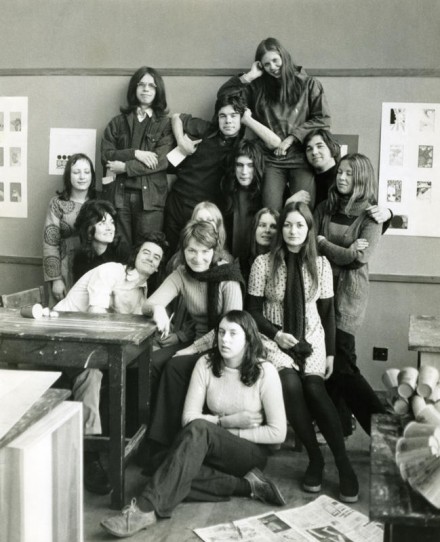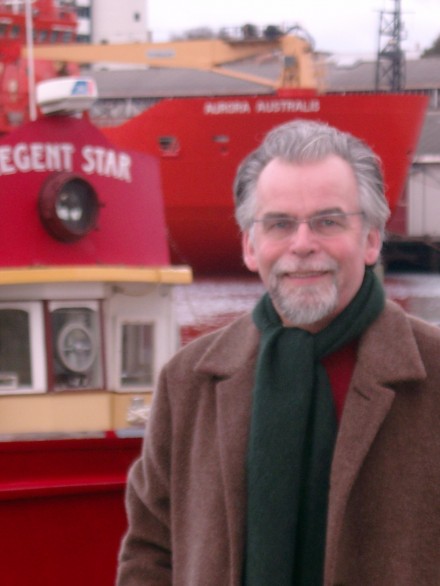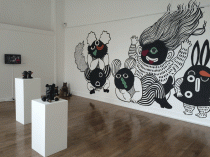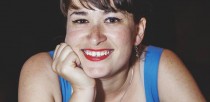Dr Peter Hill is an artist, writer, creator of Superfictions, and Adjunct Professor of Fine Art, RMIT University, Melbourne, Australia. He shares with us his first five jobs.
—
Born in 1953 and grew up in Glasgow. First jobs were working on a government research farm outside Dundee at 14, picking raspberries and strawberries. Then at 15, working on Saturdays at John Smith’s bookshop in St Vincent Street. Then at 18, with hair down to my waist, the only place of employment was Butlins in Ayr, as a bar porter at the Pig and Whistle – earning £7 pounds for an eight day week (we worked for seven days and got the eighth day off). However, the first five jobs that taught me a lot were:
01.After training in Dundee for two years, at Duncan of Jordanstone College of Art (between 1971 and 1973), I was offered a job as a lighthouse keeper off the West Coast of Scotland. In order to do it, I would have to miss the end of year assessments. I had a very friendly drawing lecturer called Ian Fearn. I went to ask his advice. “You’ll always have another opportunity to go to art school,” he told me “but this will probably be your only chance to be a lighthouse keeper”. I followed my heart rather than my head, and it turned out to be a fantastic six months during which I learned all sorts of skills that have been useful in later life. Many years later, I wrote about these experiences for the ‘Diary’ section of The London Review of Books. I then turned that into a book, which was published as Stargazing: memoirs of a young lighthouse keeper (Canongate, 2003). Currently trying to turn it into a film or TV series – just need four great Scottish actors.

Peter Hill (top left) and the class of 71
02. I spent another eight years at different art schools in the south of England, before returning to my home city of Glasgow in 1981. I’d always enjoyed writing and making art when I was at art school. I continued this from a WASPS studio in the Trongate, and witnessed the growth of Transmission Gallery from an idea to a reality through the hard work of a great number of people. I began writing about Scottish art for various magazines and journals outside Scotland, including Artmonthly, Studio International, Design, Artscibe, Aspects, and the Artists Newsletter (now an). I owe a great deal to many fine editors, particularly Peter Townsend at Artmonthly, in terms of editing, proof reading, raising advertising revenue, picture editing, and general networking.
03. After spending a year painting and writing at the wonderful Cité Internationale des Arts in Paris, I was invited to teach painting at Gray’s School of Art in Aberdeen while Ian Howard was on sabbatical. I learned a great deal about teaching, examining, and enthusing students from my colleague Alexander Fraser. I also gave my very first lecture in the art school lecture theatre, juggling two carousels of slides, and overcoming my initial nerves. This, especially, was an important hurdle to jump. Grand to emerge unscathed at the other side.
04. At the Cité in Paris there were hundreds of artists from over seventy countries around the world – painters, film-makers, poets, photographers. I was acutely aware from my time there that not only did most nations have their own governments, but also had their own art magazines. I decided to try and set up a Scottish art magazine, ALBA, and after my happy time in Aberdeen I moved to Edinburgh. This was mainly because I’d lived in Scotland’s three other cities at different times and I wanted to get to know the Edinburgh art scene. Bill Hare and Dr Duncan MacMillan at the Talbot Rice Art Centre were generous in offering me an office to work in and even a studio to paint in. One afternoon in the Plough Tavern in Bloomsbury, Peter Townsend from Artmonthly taught me more about running an art magazine than anyone else before or since. The physicality of the magazine could never had happened without the energy and enthusiasm of Arthur Watson and his staff at Peacock Printmakers in Aberdeen. The six years of ALBA was a huge roller coaster ride, which sadly did not survive a massive downturn in advertising, a deep recession, and an even deeper, personal, depression.
05. I have been privileged to meet many great art school teachers and heads of school, from Samantha Ainsley in Glasgow to Tony Jones (in various cities around the world). I probably learned most from Professor Geoff Parr in Hobart, Tasmania, (where I worked in the 1990s) in terms of how an art school might be structured and built around a world-class weekly forum program. While there, he and my colleague Paul Zika, helped me to set up an international residency program between Scotland, Hobart, and Canberra. This saw many Scottish artists, including Kevin Henderson, Anne Morrison, Claire Barclay, and Stephen Hurrell, create some memorable art projects, on-going friendships, and in one case marriage (between Anne Morrison and Troy Ruffels – a Glaswegian married to a Taswegian).
Ambition: To set up an annual Pacific City of Culture, based on the European model, and stretching from Vietnam to California, Canada to Australia, Chile to the Russian Pacific. Perhaps it should start as a Superfiction.
Motto: Always follow your heart, not your head.
//////////
We’ve asked professionals in creative industries what jobs they have had in the past to get their foot through the door (or at least pay the rent). For more in the “My First 5 Jobs” series look here.















Comments